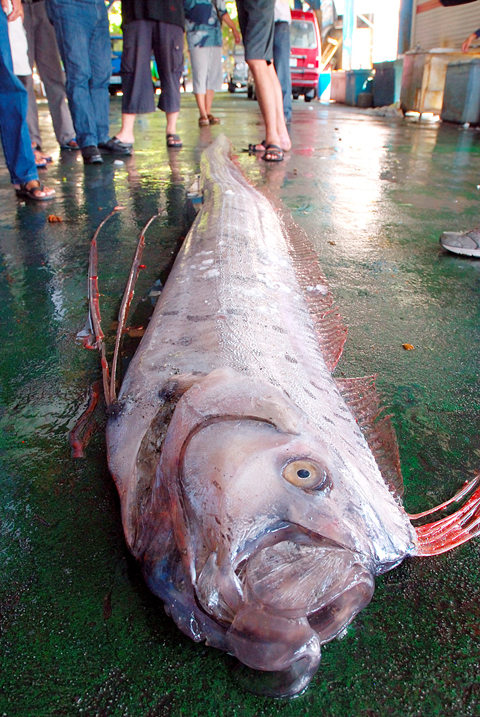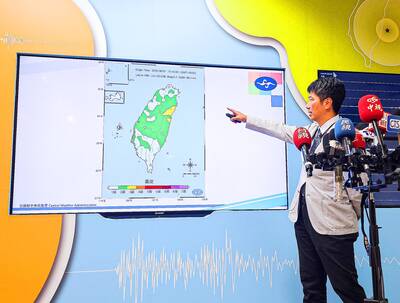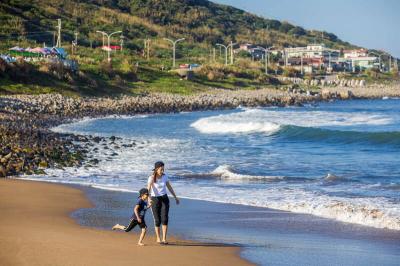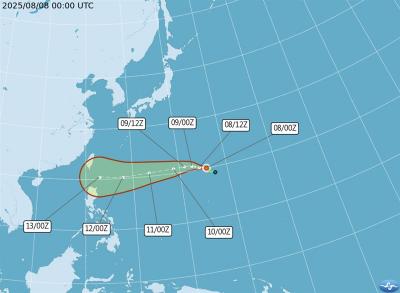Close to 300 aftershocks have been reported in Hualien following a couple of large earthquakes on Sunday, the Central Weather Bureau (CWB) said yesterday.
As of 3pm yesterday, 46 of the aftershocks were felt as earthquakes, which were between 3 and 4 on the Richter Scale, the bureau said.
CWB Seismology Center Director Kuo Kai-wen (郭鎧紋) said the phenomenon was called an earthquake sequence.

PHOTO: CNA
“The earthquake sequence happened because the large earthquake caused a bigger rupture near the epicenter, which in turn triggered seismic activity nearby and thus a series of aftershocks,” Kuo said.
“All these aftershocks, however, are a normal release of seismic energy,” Kuo said. “Both the frequency and the force of aftershocks have reduced since Sunday.”
Kuo said the earthquake sequence was not a new phenomenon in the nation’s seismic history. He also disagreed with statements that the aftershocks were a sign of a large earthquake to come.
Statistics from the bureau showed that the first earthquake of the series occurred in Hualien at 9:26am on Sunday, with the epicenter located about 15km northeast of the bureau’s observation station in Hsiulin (秀林). It measured 4.4 on the Richter scale and induced a couple of aftershocks.
Another earthquake measuring 5.6 occurred at 5:34pm, which was the second-biggest earthquake this year. After that earthquake, Hualien continued to feel aftershocks at a frequency of two to four every hour.
Seventeen aftershocks occurred between 1am and 2am yesterday, measuring between 3 and 4 on the scale. The biggest aftershock occurred at 1:44pm on Sunday, measuring at 4.9.
In related news, Taroko Gorge National Park announced yesterday that rock falls caused by the earthquakes had affected a number of walking paths in the park.
For the safety of visitors, park authorities decided from today to close the Jhueilu Historic Trail (錐麓古道), Changchun Shrine Trail (長春祠步道), Skadang Trail (砂卡礑步道) and Swallow Grotto Trail (燕子口步道) walking paths for two days.

Aftershocks from a magnitude 6.2 earthquake that struck off Yilan County at 3:45pm yesterday could reach a magnitude of 5 to 5.5, the Central Weather Administration (CWA) said. Seismological Center technical officer Chiu Chun-ta (邱俊達) told a news conference that the epicenter of the temblor was more than 100km from Taiwan. Although predicted to measure between magnitude 5 and 5.5, the aftershocks would reach an intensity of 1 on Taiwan’s 7-tier scale, which gauges the actual effect of an earthquake, he said. The earthquake lasted longer in Taipei because the city is in a basin, he said. The quake’s epicenter was about 128.9km east-southeast

GENSLER SURVEY: ‘Economic infrastructure is not enough. A city needs to inspire pride, offer moments of joy and foster a sense of belonging,’ the company said Taipei was named the city with the “highest staying power” in the world by US-based design and architecture firm Gensler. The Taiwanese capital earned the top spot among 65 cities across six continents with 64 percent of Taipei respondents in a survey of 33,000 people saying they wanted to stay in the city. Rounding out the top five were Vietnam’s Ho Chi Minh City (61 percent), Singapore (59 percent), Sydney (58 percent) and Berlin (51 percent). Sixth to 10th place went to Monterrey, Mexico; Munich, Germany; Sao Paulo, Brazil; Vancouver; and Seoul. Cities in the US were ranked separately, with Minneapolis first at

The New Taipei City Government today warned about the often-overlooked dangers of playing in water, and recommended safe swimming destinations to cool off from the summer heat. The following locations in the city as safe and fun for those looking to enjoy the water: Chienshuiwan (淺水灣), Baishawan (白沙灣), Jhongjiao Bay (中角灣), Fulong Beach Resort (福隆海水浴場) and Sansia District’s (三峽) Dabao River (大豹溪), New Taipei City Tourism and Travel Department Director-General Yang Tsung-min (楊宗珉) said. Outdoor bodies of water have variables outside of human control, such as changing currents, differing elevations and environmental hazards, all of which can lead to accidents, Yang said. Sudden

Tropical Storm Podul has formed over waters north-northeast of Guam and is expected to approach the seas southeast of Taiwan next week, the Central Weather Administration (CWA) said today. The 11th Pacific storm of the year developed at 2am over waters about 2,660km east of Oluanpi (歐鑾鼻), Pingtung County — Taiwan's southernmost tip. It is projected to move westward and could have its most significant impact on Taiwan on Wednesday and Thursday next week, the CWA said. The agency did not rule out the possibility of issuing a sea warning at that time. According to the CWA's latest update, Podul is drifting west-northwest